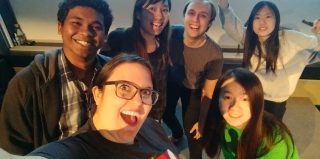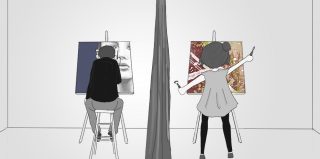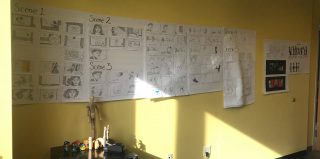Hello everyone, As we wrap up, we thought we would share some of the lessons we learned. Dedication: Our team was incredibly dedicated to the project. Animation is difficult and inevitably there will be crunch time. What got us through was the fact that everyone is incredibly passionate about making this project the best it could […]
This week, we began to orient ourselves toward mid-semester presentations. We want to be able to demonstrate our conscientiousness toward effective environment transitions and emotive movements, as well as a fully integrated and animated dance. For that to happen, we needed to lock in a few things and defend them from change for the remainder of the semester:
- Sequence of events
- Environment time period and asset list
- Desired transition effect between cultural dance
Story Development
In order to lock in story and setting, we needed to do a fair amount of playtesting and talking. We decided we wanted our setting to be 1940s, and for the non-present owner of the toy workshop to be an older man. Our concept designer then made a list of all the objects we had selected for the space, and identified which are in need of modification based on information we have learned since creation of the animatic.
To give a sense of the process: We knew we wanted a lamp in the scene to project designs onto surfaces. The problem was that we had learned in testing that using it as an overhead spotlight makes the viewer feel incredibly small. By changing the role of the light from light source into a stagnant object in the background – reducing its size, and turning it away from the viewer – it loses its distracting elements. From there, the concept designer looked up 3-to-5 real life examples of what our lamp might look like.
As a team, we discussed which elements we liked – the bell, base, and rust of the left, the neck of the right – and how they might be incorporated into a single original lamp.
By the end of the meeting, we had a strong sense of what the objects in the room will look like, and our concept designer felt comfortable enough with that vision to begin to draw it out for the modelers.
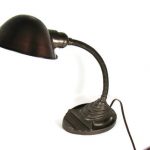
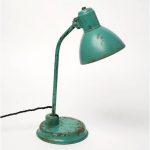
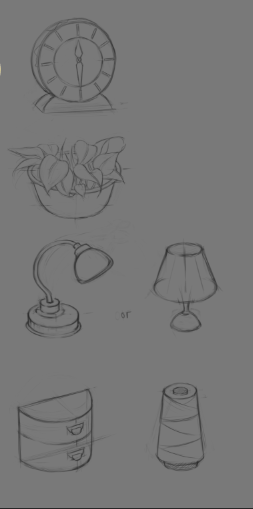
In the meantime, we also had our first story playtest. Feedback from Quarters surprised us, since most of the opinions we received address story. We realized our ending was a bit “Deus ex Machina,” and resolving that issue involved a few iterations. We figured out a story mechanic that might work, but determining an effective way to execute it was the true challenge. We storyboarded three different possible endings, and then presented the story to students around the building.

What was particularly interesting was that no one could agree on which was the best option. Some people felt ending #1 was just as Deus ex Machina as what we had at quarters, others felt #2 was counter to our theming throughout the story. One ending, though, stood out as being generally agreeable. No one was strongly against it, and no one was adamantly for it, which indicated to us that it is a the most natural fit to the plot.
Character Modeling & Rigging
Our team had agreed that by Tuesday we would need a fully moving rig of the Indian doll. Those of us on the team unfamiliar with motion capture thought it would be as simple as inserting the animation data into the doll. To prove a point, our tech artist demonstrated what would happen if he did this to our Indian doll; we watched in horror as her hand and arm clipped straight through her leg.
So we left him to tweaking the motion. In the end, he got her marching.

In the meantime, our character modeler got started on our Brazilian Angoleiro. He is designed to imitate a rag doll, and she has been experimenting a great deal with the look – namely adapting stitching and button eyes in endearing ways.
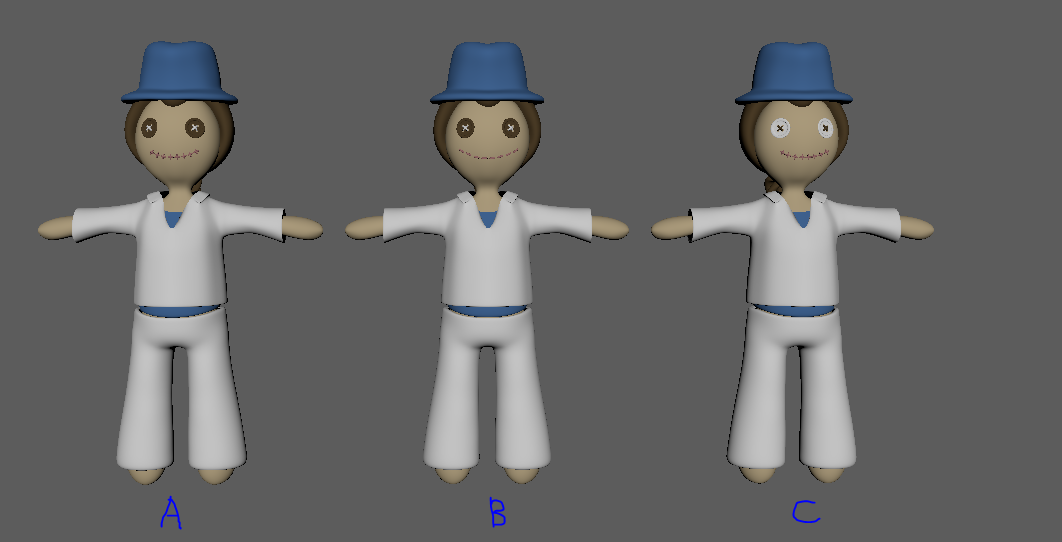
Finally, we received approval for our last doll – Ghana. With every cultural doll, we have refused to begin modeling until outside experts approve our design. While we had received the “ok” from Ghanaian individuals, due to the specificity and obscurity of the dance we are emulating, we wanted as many eyes as possible on her. Thankfully, we are good to go, giving our modeler the freedom to proceed.
Understanding the Technology
In the same meeting where we selected asset styles, we also discussed what the transition from dance to dance would look like. We had two things we could all agree on: 1) The environment will shift to reflect the culture, starting from the doll and going out in a ripple; and 2) objects in the room will transform when the ripple reaches them.
The word transform, though, is incredibly vague. So after asset presentations, our environment modeler showed us a few different transformations: some designed for Maya and some designed for Premiere. Everyone had very visceral reactions, and thankfully showed that even without discussing it prior, we all were imagining the same thing for our film. We discussed what we liked, compared it to what our environment modeler felt she could do. Ultimately, we selected a particle effect we would try to implement and, should we find it out of scope, a cut we would use its place.
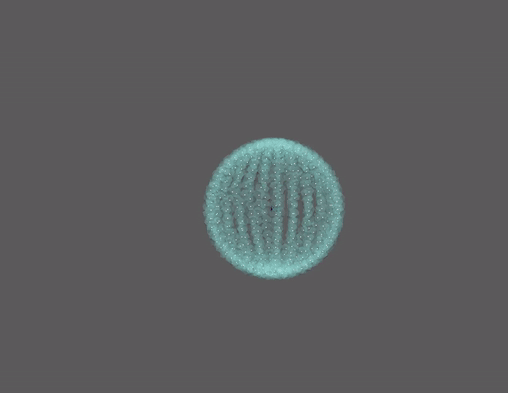
The other thing we have been investigating has to do with the render. Every time we have captured the image in 360º and put the goggles on we noticed something odd: this grainy “noise” was appearing in the darker areas of the room. Our environment modeler believed it had something to do with Arnold – the rendering software – and how it handles light.
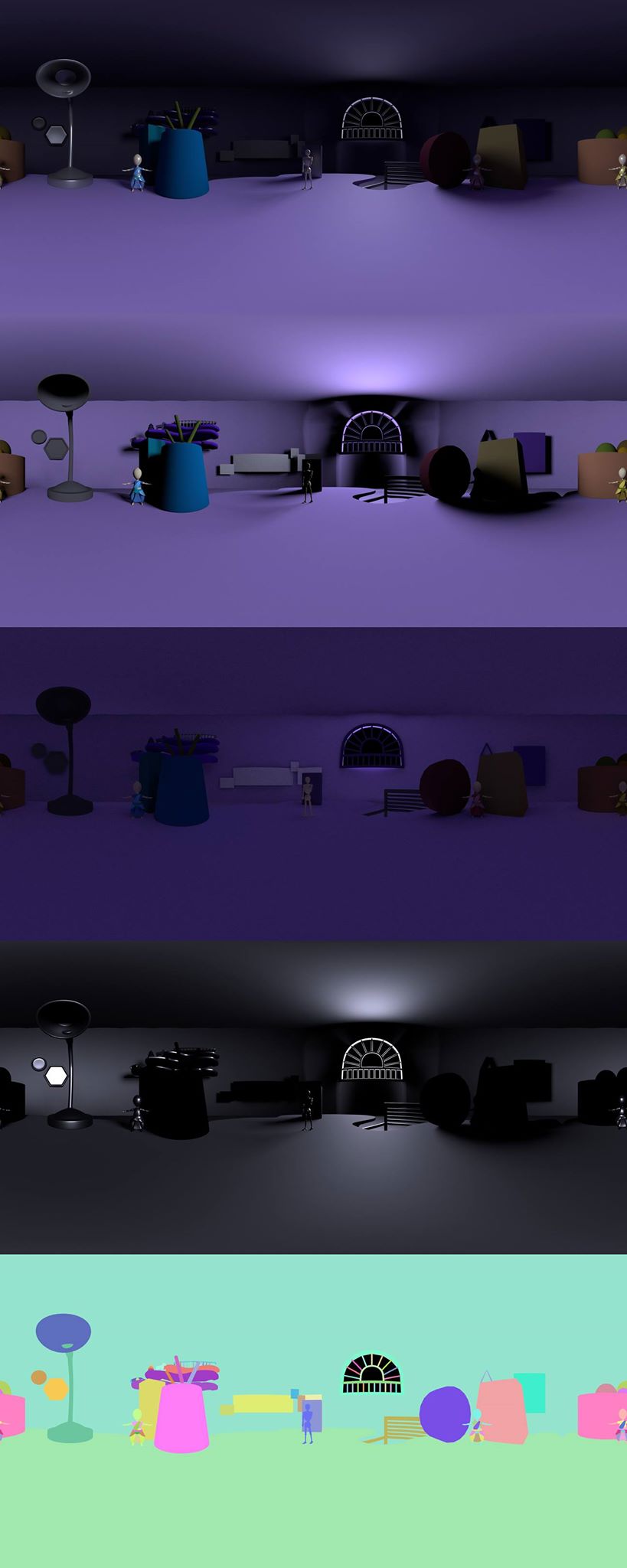
She has since broken it apart by doing what is called an Arbitrary Output Variables (AOV) test. By testing in parts she can more closely examine the scene and troubleshoot the problem. We’re hoping to have this resolved for the next large render.
Sound
We finally began the exciting process of recording music! We are fortunate enough to have Rajeev, a classical indian violinist, in our program. He gathered a few of musician friends of his and brought them to the ETC to record with spatial mics… in the student game lounge (a very efficient recording studio).
Despite the location, the recordings turned out great. Our sound designer put them in our 360º animatic and played around with positioning. When testing, it is clear that the sound is directional – it feels like the viewer is in the midst of all the sound (exactly the effect we were intending). This was incredibly encouraging.
We sent out the recording to Pitt Nrityamala, the Indian dance troupe with which we are working, and have scheduled a time for them to go into the motion capture studio next week.
To cap off the week, we also had our final “first” meeting with musicians: All dancers and musicians are officially locked in (including our dancer for Manny the Mannequin). The capoeira band, led by Jean Baptiste (a Capoeira Angloa instructor), will be recording this Saturday. All the work for the Ghanaian dance has been scheduled for the final few days of spring break.
Essentially, we are off to the races!

